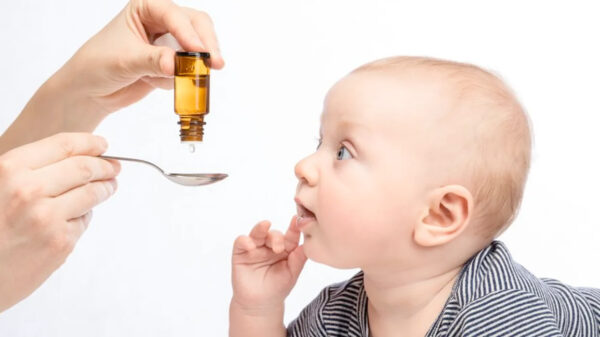 If you have kids, you probably have a cabinet full of vitamins and supplements, and over-the-counter remedies to stay healthy or relieve illness and injury. And let’s not forget your own medication cabinet chock full of meds for the onset the next cold, flu, injury or infection. Yet, despite being the relief you turn to in times of sickness, these medications and remedies can often times present serious household dangers if not managed properly, especially around children. In fact, improper medication management sends thousands of children (and adults!) every year to the emergency room.
If you have kids, you probably have a cabinet full of vitamins and supplements, and over-the-counter remedies to stay healthy or relieve illness and injury. And let’s not forget your own medication cabinet chock full of meds for the onset the next cold, flu, injury or infection. Yet, despite being the relief you turn to in times of sickness, these medications and remedies can often times present serious household dangers if not managed properly, especially around children. In fact, improper medication management sends thousands of children (and adults!) every year to the emergency room.
Of course, keeping your children safe is a top priority, and you can easily avoid health scares or trips to the emergency room by properly managing your medications and vitamins. Here are the 5 must-know medication management tips for your family’s safety.
Tips for Better Medication Management
Following proper and consistent medication management regimens is more than just practicing safe storage. It involves everything from protecting your children from accidentally ingesting harmful medications to managing proper dosages.
1. Properly Administer Medications – One of the most essential aspects of properly managing your medications is ensuring that you are correctly administering them. This includes reading the labels, finishing the full treatment as prescribed, taking the medications at the right time, and using the proper measuring utensils. For example, don’t wing it with a teaspoon from your kitchen drawer. Use the measuring tool given to you at the pharmacy for proper measurement.
2. Track Your Medications – It’s too easy to forget medications that you or your children have taken, ones that have worked well, and meds that may have caused an adverse or allergic reaction. Save this information somewhere that can be accessed anytime and anywhere (i.e. during vacation, an abrupt doctor visit, on daycare forms, with a sitter, etc.)
3. Check Drug Interactions – Medications can have an array of reactions depending on other prescriptions, vitamins, over-the-counter meds, and supplements that are being administering simultaneously. And keep in mind that pharmacies don’t always have the full story of what you or your child may already be taking, especially if you’re filling prescriptions at more than one pharmacy. It can be stressful and dangerous not knowing the possible interactions.By keeping all of your medications, vitamins and supplements in one, easily accessible place you can rest easily. Whether discussing medications with your doctor, visiting an urgent care center, or filling a prescription at the pharmacy, you can simply show your full list of medications to ensure there won’t be any adverse reactions with current medications.
4. Carefully Follow Directions – With all medications, especially liquid meds for children, you want to be sure to read the dosages and measure them out precisely. When reading instructions ensure you are not confusing dosages such as .5ml with 5ml, which is 5x more than the recommended dose- and a common mishap! Children under five are most likely to visit the ER from adverse drug events such as improper dosages and medication poisoning. In fact, one in 250 two-year-olds visits the ER. Also take note on the proper route in which you administer medications (i.e. topical, oral, etc.)Since some babies or children may refuse to take medication, save yourself a fight with your toddler, and think ahead by asking your doctor or pharmacist for some tricks on administering the medication. Consider asking what is permissible (if anything) when it comes to mixing the medication with breastmilk, soft foods, and so on. You’ll be glad you asked these questions up front!
5. Safely Store Medications – Over 35,000 children are sent to the emergency room every year after accidentally getting into medications when a parent or caregiver is not looking. After every medication use, you want to properly store the medicine in a safe and secure location. Each medication may have different requirements (ie. temperature requirements), so be sure to read the label. Choose a safe spot that is out of reach and out of sight, and securely lock the safety cap after each usage. It’s advisable to install a child safety lock on the cabinet for which you are storing your medications. Last but not least, do not refer to medications or vitamins as candy.
Kudos to you mom and dad for being proactive about medication management safety. If you’re interested in a digital tool that can help you follow all of the above tips in one place, we highly recommend MyCabinet (link to app.MyCabinet.com and APP), which is not only super cool (a virtual medicine cabinet? Sign me up!), this tool makes it easy for you to manage medications, reminders and more – for EACH member of your family! You can:
- Set medication reminders with the dosage details and custom messaging (i.e. don’t forget to take each morning on an empty stomach).
- Track all of your medications by storing and archiving them.
- Cross check drug interactions to avoid adverse reactions.
- Set up a cabinet for each family member so everyone gets to prioritize their health!
- And much more!
So, what’s in your cabinet?
MyCabinet APP is FREE for a limited time! Don’t miss out… DOWNLOAD NOW and enjoy!
Source: https://www.cdc.gov/medicationsafety/parents_childrenadversedrugevents.html


